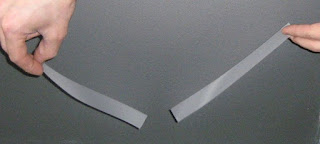Limiting factor: a resource or component that constrains a population's size.
Examples: food, water, nesting sites, predators, parasites, reproduction rates, finite chemicals (iron, phosphorous, nitrogen, potassium, etc.)
Considering all those examples, doesn't it seem like there's more than one limiting factor at a time? Don't they all affect the population at once?
Can there be more than one limiting factor at a time?
The answer, counter-intuitively, is no. Liebig's Law of the Minimum states that there can only be one limiting factor and uses an analogy of a barrel:
Examples: food, water, nesting sites, predators, parasites, reproduction rates, finite chemicals (iron, phosphorous, nitrogen, potassium, etc.)
Considering all those examples, doesn't it seem like there's more than one limiting factor at a time? Don't they all affect the population at once?
Can there be more than one limiting factor at a time?
The answer, counter-intuitively, is no. Liebig's Law of the Minimum states that there can only be one limiting factor and uses an analogy of a barrel:
The lowest slat prevents the water (which represents the population) from increasing any higher. If that resource were to become much more abundant then the population could rise again to create a new limiting factor.
Video illustrating this:
I hear you objecting: Yes, but aren't all those factors acting at once on the organism's population? Say, aren't predators and limited food both keeping the population low? Both are acting on the organism's population, but the strongest force is the one keeping the population at the suppressed rate that it currently is. If you were to change that one most limiting factor the population would rise. Change anything else and it would stay stationary (in theory).
The below illustration is something I played with to also add time into the equation showing how that limiting factors can change and how there are secondary effects of either too much or too little of a factor. For example, too little sunlight and a plant can't photosynthesize well, too much and the plant becomes scorched; too little water and the plant desiccates, too much and it drowns.
To use a plant as the example again (because their needs are simple), an understory plant's population is limited by a lack of sunlight. Say a tree dies, falls over and opens up the canopy. The aforementioned plant's population will now rise to a new level. That level will soon be constrained by a new factor, such as limited water. If rain came, then the population would be constrained by limited space or a chemical necessary for photosynethesis such as nitrogen. The assumption is that a species will always produce more offspring than survive and that it is in a constant battle of increasing its population and then having it constrained.
There are some scientists that would like to play around with introducing iron into strategic locations in the ocean to boost marine productivity (since it's a limiting factor for phytoplankton) and possibly offset global warming by absorbing an abundance of CO2. More here.
This idea of the weakest link breaks the chain also has been used in many other systems scenarios, such as management, economics, health, government, et cetera.
Pix and vid:











